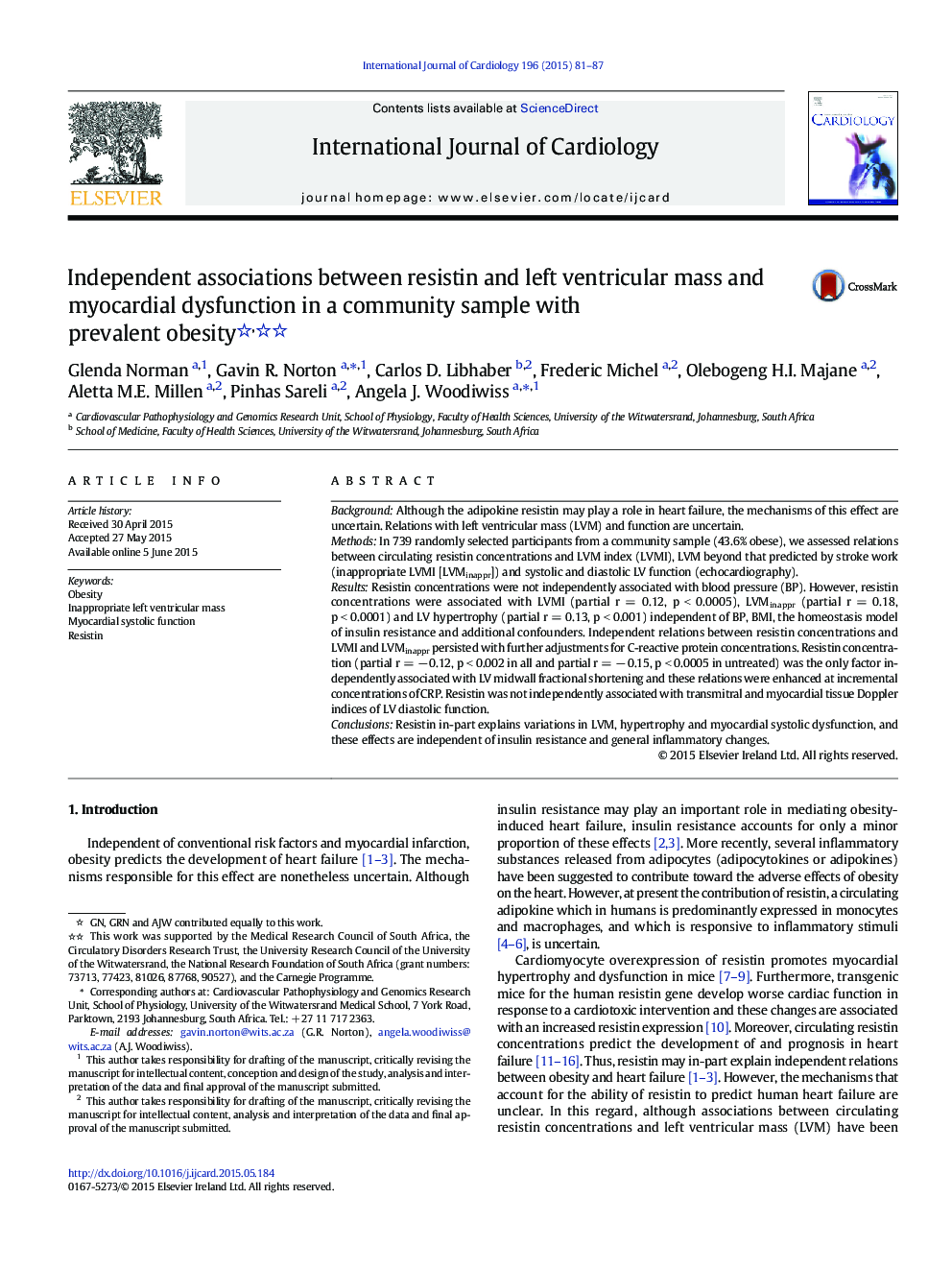| Article ID | Journal | Published Year | Pages | File Type |
|---|---|---|---|---|
| 5966040 | International Journal of Cardiology | 2015 | 7 Pages |
BackgroundAlthough the adipokine resistin may play a role in heart failure, the mechanisms of this effect are uncertain. Relations with left ventricular mass (LVM) and function are uncertain.MethodsIn 739 randomly selected participants from a community sample (43.6% obese), we assessed relations between circulating resistin concentrations and LVM index (LVMI), LVM beyond that predicted by stroke work (inappropriate LVMI [LVMinappr]) and systolic and diastolic LV function (echocardiography).ResultsResistin concentrations were not independently associated with blood pressure (BP). However, resistin concentrations were associated with LVMI (partial r = 0.12, p < 0.0005), LVMinappr (partial r = 0.18, p < 0.0001) and LV hypertrophy (partial r = 0.13, p < 0.001) independent of BP, BMI, the homeostasis model of insulin resistance and additional confounders. Independent relations between resistin concentrations and LVMI and LVMinappr persisted with further adjustments for C-reactive protein concentrations. Resistin concentration (partial r = â 0.12, p < 0.002 in all and partial r = â 0.15, p < 0.0005 in untreated) was the only factor independently associated with LV midwall fractional shortening and these relations were enhanced at incremental concentrations of CRP. Resistin was not independently associated with transmitral and myocardial tissue Doppler indices of LV diastolic function.ConclusionsResistin in-part explains variations in LVM, hypertrophy and myocardial systolic dysfunction, and these effects are independent of insulin resistance and general inflammatory changes.
